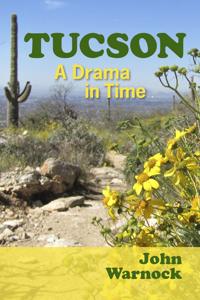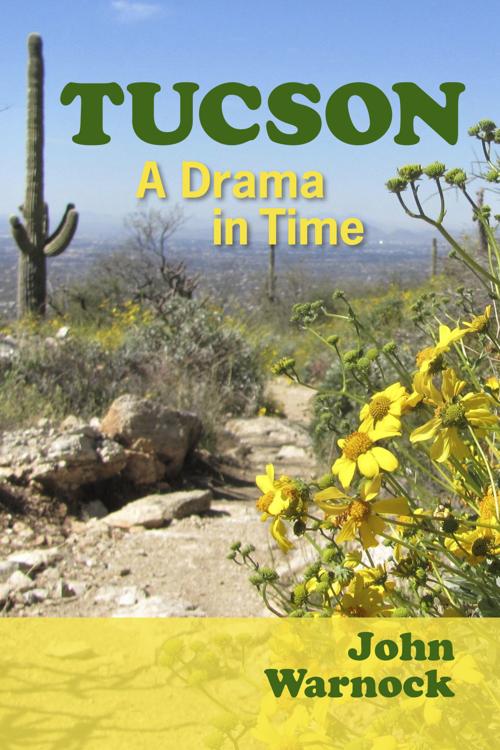This excerpt of “Tucson: A Drama in Time” concerns Leighton Kramer, who built an 8,000-square-foot home called Rancho Santa Catalina. The Kramer Ranch grounds, called Catalina Field, was the location for the first Fiesta de los Vaqueros. The rodeo moved from this location in 1932.
1922
Leighton Kramer, a businessman from Philadelphia and a tuberculosis sufferer who has been visiting Tucson since 1918 after cavalry service on the Mexican border during World War I, buys the land and structures owned by James and Lata Wheeler, and other property up to what is now Grant Road between Campbell and Tucson Boulevard. At the site of the Wheelers’ house on the north side of what is now Elm Street, he begins constructing a large house he will call Rancho Santa Catalina.
1924
North of Elm, Leighton Kramer completes his Rancho Santa Catalina, an 8,000-square-foot two-story home with 22 rooms and 5 baths and a roof of green Ludowici tiles, and it is “easily the largest and most pretentious of Tucson’s private residences,” according to a reporter form the Citizen writing in 1925. Kramer also establishes this year the Arizona Polo Association of Tucson. In 1925, with other local boosters, he will found Tucson’s Fiesta de los Vaqueros and Rodeo Parade, both still going in 2014.
1925
First year of the Fiesta de los Vaqueros at the Kramer Ranch grounds (Catalina Field) and downtown. The Blackfoot painter Lone Wolf (d.1965) draws the art for the first flier and rides in full Blackfoot regalia in this and later rodeo parades. A painting of his also is given the place of honor over the fireplace in Rancho Santa Catalina. In “Progressive Arizona” for 1925, Kramer writes that “La Fiesta de los Vaqueros (is) a name destined to be as famous in the annals of the Sunshine City as the Mardi Gras of New Orleans, the Beauty Pageant of Atlantic City, or Flower Show at Pasadena.”
Dec. 18, 1930
At Olsen and Elm, across from Leighton Kramer’s 200-acre Rancho Santa Catalina, the Arizona Inn (first phase, architect Merritt Starkweather, landscape architect James Oliphant) is opened by Isabella Greenway on 14 acres, adjoining the home she had built at the site two years earlier. The inn is to be open half the year, from November to May.
1940
Leighton Kramer had died in Tucson in 1930 and his estate was probated in 1933. Dickson (b. 1896, d.1985) and Sue B. Potter from Easthampton, New York, now buy from Hardy-Stonecypher Realty the portion of what had been Kramer’s ranch just across Elm from the Arizona Inn, including the Rancho Santa Catalina house and the Wheeler well and 80-foot circular swimming pool on the property. The Potters add the Potter Place entrance on Elm Street, build a residence and establish in Kramer’s former house the Potter School, a sporty horsey finishing/college prep school for girls grades 7-12 that operates into the early 1950s. In 1949, faculty come from Smith, Vassar, Barnard, Scripps, Ohio Wesleyan, and Princeton Theological Seminary (David Sholin, later to become the pastor at Mountain View Presbyterian, an activist in the Sanctuary Movement, the president of Amnesty International). On the remaining Kramer Ranch grounds to the north, Catalina Vista is now platted. The development looks back to the “City Beautiful Movement” of 10 years earlier, with winding streets, parks, and houses limited by covenants to “Spanish, Mediterranean, Moroccan, Mexican, Indian, Early Californian” styles. Non-whites are excluded from this development and from others in Tucson, a practice that continues into the 1960s. There are not many sales in Catalina Vista until after World War II.





